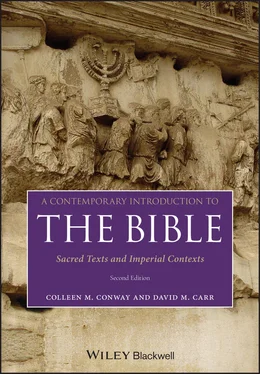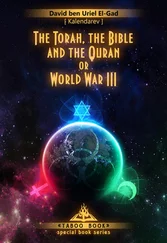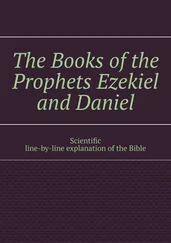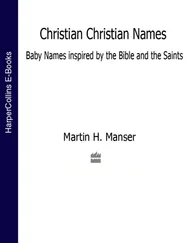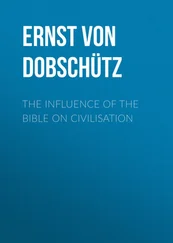1 ...6 7 8 10 11 12 ...24 
FIGURE 0.1 Scholarly edition of the same text as in figure 0.2 below. In contrast to that early manuscript, the edition seen here has chapter and verse numbers along with scholarly notes at the bottom about alternative Hebrew readings to the ones given in the body of the text.

FIGURE 0.2 One of our earliest manuscripts of the book of Isaiah, dated to the early first century bce. Note how the letters are hung from lines on the parchment and a scribe has added a verse into the middle.
Drawing on this data, a translator must then decide on which ancient manuscript reading to follow and translate, often determining that some ancient readings are errors, while other manuscripts witness to an earlier, better reading, at least for a given verse or phrase. On occasion, a biblical scholar may judge that all of the manuscript witnesses preserve an error. In such cases, that scholar may propose a reading that is not preserved in any manuscript. This second method of correction is called conjectural emendation.
These advances in knowledge about the text and language of the Bible mean that academic study of the Bible requires use of up-to-date translations of the biblical text. The King James Version(also known as the KJV or “Authorized Version”), though beautiful and cherished by many, is not an up-to-date translation. It was done four hundred years ago. Scholars then knew far less about biblical languages than they do now. Moreover, the KJV translation is based on unusually corrupt manuscripts with more errors and expansions than higher-quality biblical manuscripts used today. Therefore, the King James Version should not be used for readings in a twenty-first-century academic course on the Bible.
Translations also vary in religious perspective. The New Jewish Publication Society (NJPS) translation obviously comes out of a tradition of Jewish interpretation of the Tanakh. The New Jerusalem Bible (NJB) and New American Bible (NAB) were produced by Catholic scholars. The New Revised Standard Version (NRSV; preceded by the Revised Standard Version – RSV) aims to be an ecumenical translation, but it is part of a line of Protestant revisions of the King James Version. The New International Version (NIV; now available in updated form as Today’s New International Version) is also Protestant and was conceived as an evangelical alternative to the RSV/NRSV.
Translations also vary in style: whether they aim to stay as close to the biblical languages as possible or whether they aim for maximum readability. Formal correspondencetranslations, while still containing interpretation on the part of translators, aim to stay as close as possible to word-for-word translation of the Hebrew, Aramaic, or Greek text. This can make them good tools for study, but it also makes them more difficult to understand. Translations that tend toward formal correspondence include the NRSV, NIV, and New American Standard Bible (NASB). Other translations tend toward dynamic equivalence, which aims for equivalent meaning, but not a word-for-word translation. This results in translations that are more readable, but also may contain further interpretation on the part of translators. Examples of translations that tend toward dynamic equivalence include the NJB, NEB, and several other translations produced by Protestant groups, such as the Good News Translation (GNT; also known as the “Good News Bible” and TEV – Today’s English Version) and the Contemporary English Version (CEV). These translations should be distinguished from resources such as the Living Bible or the Amplified Bible. The latter are not direct translations of the Hebrew and Greek texts, but paraphrases or expansions of other translations. For example, the Living Bible is a paraphrase of the nineteenth-century American Standard Version. Such paraphrase subtly adds yet another level of interpretation between the reader and the Hebrew or Greek text and is not helpful for academic work on the Bible. This becomes evident, for example, in cases like the one given at the end of this chapter in Appendix 1, where the Living Bible adds a long section to Isa 52:15 (anticipating Jesus) that has no parallel in the Hebrew text.
One more way that contemporary Bible translations vary is in the extent to which they aim to use gender-neutral language, such as “humanity” instead of “mankind.” Though older writing conventions endorsed the use of “man” for “human” or “he” for “he or she,” many now argue that general use of such male-focused language reinforces male domination of women. This has led to two levels of revision of older translations that used such male-specific language. In some cases, past English translators had used male-specific words to translate Hebrew or Greek expressions that were gender neutral. The recent revision of the NIV translation, Today’s New International Version (TNIV), aims to correct such mistranslations to what are termed “gender-accurate” English expressions. For example, where the King James Version and some other versions render the first part of Gen 1:26 as “Let us make man in our image,” versions like the TNIV more accurately reflect the gender neutrality of the Hebrew word for “humanity” that is used here, e.g. “let us make human beings in our image.”
Some other translations go yet further, revising other references to human beings toward gender-neutral English terms, even in cases where the original biblical languages use masculine nouns. Examples of such translations include the NRSV, NJB, and the Contemporary Torah, a “gender-sensitive” revision of the NJPS. We generally follow that policy in this textbook, using “God” rather than “he” or “him” and preferring gender-neutral references to human beings. Nevertheless, the Bible was formed in a culture that privileged masculinity and conceived its God in largely masculine terms, and this is reflected at points in the translations included in this textbook.
Finally, readers should recognize that all these translations are published in different editions, each with its own perspective and added resources. For example, the New Oxford Annotated Bible with Apocrypha and the HarperCollins Study Bible are not different translations, but different editions of the NRSV. Each one has a different introductory essay, introductions to the biblical books, and brief commentary on the biblical text written by biblical scholars commissioned by the publisher. Indeed, whenever you use a given translation, it usually includes many other elements that were added by the publisher of that particular edition: headings for different sections of the biblical text, marginal references to other biblical passages, maps, and other additions. These can be helpful resources. Nevertheless, users of such editions should be aware of how these additional elements – none of which is actually part of the Bible per se – can subtly influence how one reads a given biblical passage. They should be used critically.
In the end, there is no one contemporary translation that scholars agree is decisively best. Arguments can be made for a variety of the contemporary translations that are listed in Appendix 2 of this chapter. Also, if your work focuses on a particular passage, you can get a good sense of particular translation issues in it by comparing multiple up-to-date translations with each other. Some like to use online resources for this, such as Bible Study Tools ( www.biblestudytools.com\compare-translations) or the Bible Gateway ( www.biblegateway.com). It should be noted, however, that these resources contain a number of out-of-date translations and often neglect Jewish translations (e.g. the New Jewish Publication Society [NJPS] version). If you use these sites, be sure to select up-to-date translations on the Christian comparison sites (e.g. NRSV, NIV) and compare those with the Jewish NJPS translation, which can be purchased in book form or accessed online at www.sefaria.org. Alternatively, you can greatly benefit from using a Bible software tool (such as Accordance) and purchasing multiple, recent Christian (e.g. NRSV, NJV) and Jewish (e.g. NJPS) translations for it that you then can compare with each other. Such comparison can reveal major differences between translations, and the more one finds such differences, the more one wonders how to decide between the alternatives. This is ideally solved by learning biblical languages! Many students, however, lack time and/or interest in going that far with biblical studies. For those lacking knowledge of biblical languages it is important to know where a given translation is only one possible rendering in English of a phrase in Hebrew, Aramaic, or Greek that could also be rendered, perhaps better, in another way. Comparison of Bible translations shows this.
Читать дальше
